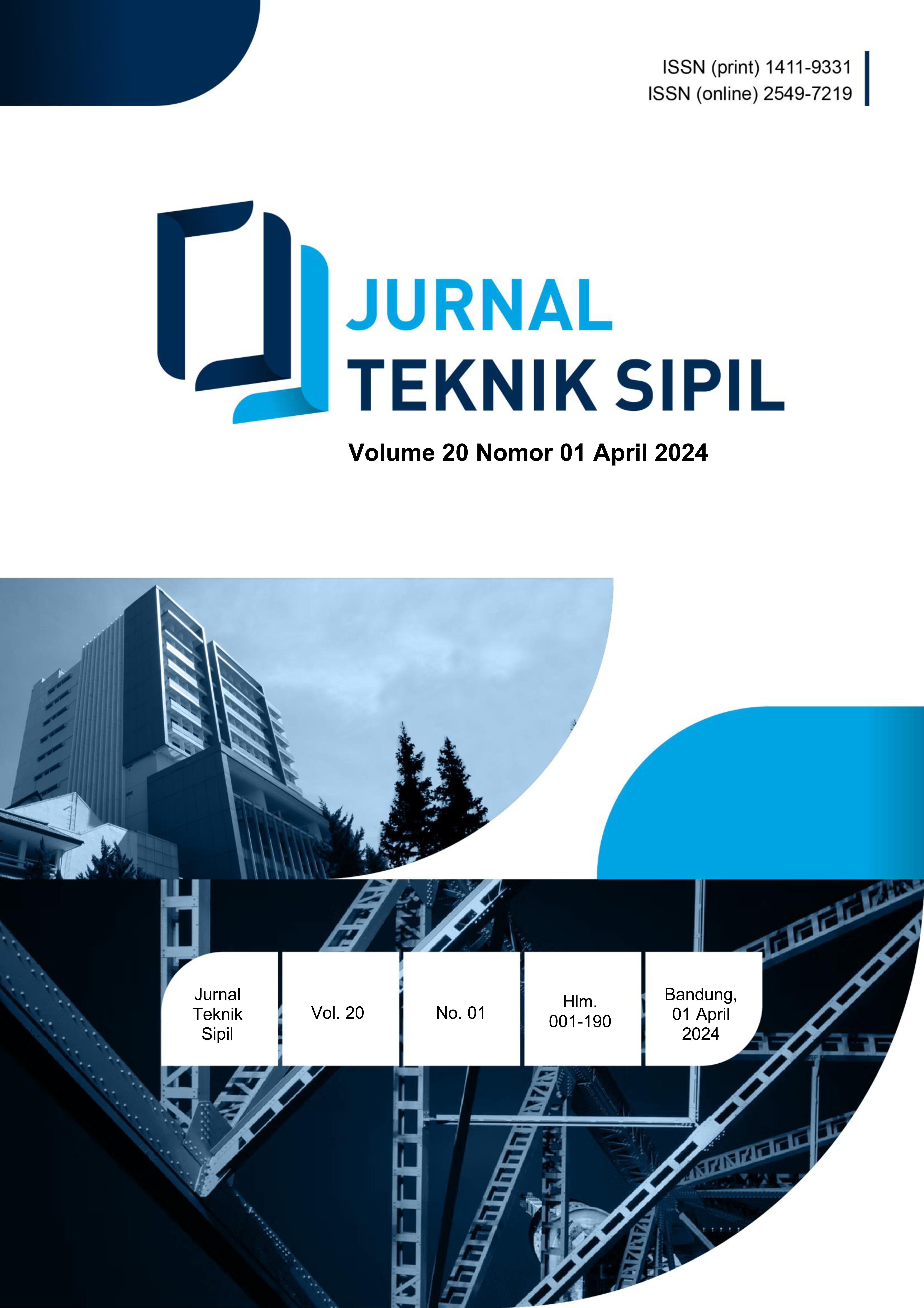IDF (Intensity-Duration-Frequency) Curve Analysis of Ibu Kota Negara (IKN) Watersheds
DOI:
https://doi.org/10.28932/jts.v20i1.6500Keywords:
Flood, IDF, IKN, Mononobe, ShermanAbstract
The area of Ibu Kota Negara (IKN) in East Borneo is a strategic area that is projected as the new capital city of Indonesia therefore it requires water resources infrastructure to support development of IKN. IDF curve analysis of the IKN watershed is expected to be able to estimate the amount of rainfall intensity with various return times to design various types of water structures such as drainage, culverts, and flood canals. Rainfall data in the form of daily data is a consideration for conducting IDF curve analysis using the Mononobe equation and the Sherman equation. The distribution of rainfall of the IKN watershed follows the Log-Normal distribution and produces design rainfall values with various return times such as 2, 5, and 10 years. The trend of rainfall intensity of the IKN watershed shows that rainfall intensity decreases as the duration of rainfall increases. The Sherman equation is known to give higher rainfall intensity values than the Mononobe equation at short durations of less than two hours while for durations of more than two hours, the opposite occurs. The maximum rainfall intensity is 419.67 mm/hour at a return period of 100 years at a duration of 5 minutes or 0.083 hours. The minimum intensity is found at a duration of 5 hours with a return period of 1.1 years amounting to 7.74 mm/hour. While the results of the analysis with the Sherman approach, with the same return period and duration, obtained a maximum value of 231.42 mm/hour and a minimum value of 10.88 mm/hour.Downloads
References
Al-Wagdany, A. S. (2020). Intensity-Duration-Frequency Curve Derivation from Different Rain Gauge Records. Journal of King Saud University-Science, 32(8), 3421-3431.
Asih, A. S., & Habaita, G. T. (2013). Analisis Kurva IDF (Intensity-Duration-Frequency) DAS Gajahwong Yogyakarta. ReTII.
Astarini, A., Muliadi, M., & Adriat, R. 2022. Studi Perbandingan Metode Penentuan Intensitas Curah Hujan Berdasarkan Karakteristik Curah Hujan Kalimantan Barat. Prisma Fisika, 10 (1), 1-7.
Fajrian, D. A., Sari, K. E., & Sutikno, F. R. (2023). Studi Ketahanan Air dengan Konsep Sponge City (Studi Kasus: Kelurahan Kidul Dalem, Kecamatan Klojen, Kota Malang). Planning for Urban Region and Environment Journal (PURE), 12(1), 221-232.
Fauziyah, S., Sobriyah, S., & Susilowati, S. (2013). Analisis Karakteristik dan Intensitas Hujan Kota Surakarta. Matriks Teknik Sipil, 1(2).
Kamiana, I Made. 2012. Teknik Perhitungan Debit Rencana Bangunan Air. Yogyakarta: Graha Ilmu
Noor, M., Ismail, T., Shahid, S., Asaduzzam, Md., Dewan, A. 2022. Projection of Rainfall Intensity-Duration-Frequency Curves at Ungauged Location Under Climate Change Scenarios. Sustainable Cities and Society, 83. Doi: https://doi.org/10.1016/j.scs.2022.103951
Downloads
Published
How to Cite
Issue
Section
License
Copyright (c) 2024 Azarya Bees, Ni Made Candra Partarini

This work is licensed under a Creative Commons Attribution-NonCommercial 4.0 International License.
















